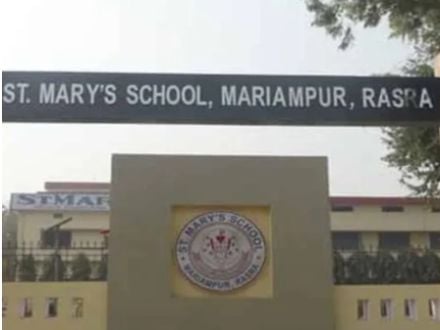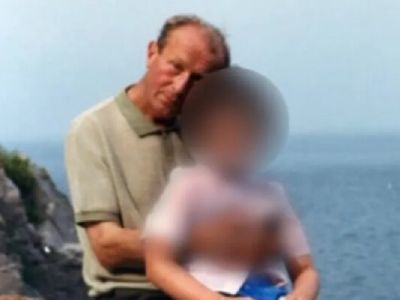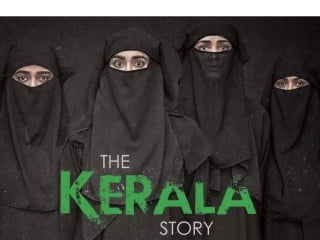Hindus who want to embrace other religions due to so-called discriminatory caste system in Hindu Dharma, will you make note of this fact about Dalit Catholics ? Also Hindus should remember that Hindu Dharma does not discriminate against anyone due to his/her birth, but it has Varna system which is based upon one’s virtues and deeds. Misconceptions about the Varna system are created by anti-Hindus to divide Hindus and now it is need of the hour for Hindus to unite by forgetting their caste, creed, political views etc., to establish Hindu Rashtra ! – Editor, HJS website

Why do Dalits convert to Christianity ? To break out of the Hindu caste system, you might say. Not completely true, as we found out in Harobele, just 60 km from Bengaluru. Christianity entered the region centuries ago. The Catholic mission here, one of the oldest in Karnataka, was established in 1675; 980 of the 1,000 families here are Catholics.
Catholicism, however, has offered no escape from untouchability for Dalits like Arogya Swamy (37), whose family left Hinduism and settled in Harobele three centuries ago. For proof, we enter an untidy little tea shop pretending as if we don’t know each other. I am served in a steel tumbler like everybody else and offered a chair. Swamy is served his tea in a disposable plastic cup. He hesitates to sit along with the other customers; he stands outside. As we sip our tea in silence, he gestures toward the barber shop next door. The barber flings a tennis ball into the distance and shoos away a group of boys with a stick. “Those boys were Dalit Catholics. The barber didn’t want them to pollute his shop with their ball,” says Swamy later.
The last time dalits tried to force their way into hotels and barber shops, he says, upper caste Catholics boycotted the establishments until the old order was restored.
Caste hostilities in this village came to a boil this January when more than a hundred dalit Catholic families were forced to spend a night in the fields to hide from a rampaging mob of upper-caste Catholics. The issue made it to the news only in February when activists of the NGO, All India Human Rights Council (AIHRC) complained to the National Human Rights Commission (NHRC) that the police had not registered an FIR even a month after the well-orchestrated riot. Although the intervention of the activists has ensured the registration of a case under the SC/ST Atrocities Act, a senior policeman at the local station says, on condition of anonymity, “They (victims) are Catholic. How can they claim relief under the Atrocities Act? They lost their Scheduled Caste status when they converted,” he says.
“The attackers were abusing the dalits using casteist slurs. They kept repeating that dalits had forgotten their place,” says local priest, Fr Chinnappa, recalling the riot with horror. A Dalit from Tamil Nadu, Fr Chinnappa was ordered to stay away by violent Catholic men from the Vokkaliga (Gowda) and Golla caste as they attacked Dalit men, women and children, and destroyed houses. “They didn’t even spare the cattle and the dogs,” says Naveen Kumar whose father Uppar Raju was one of the first to be attacked.
Chinnaraju Sandhyagoppa – a resident Vokkaliga Catholic, local appointee of the powerful Vokkaliga leader and Karnataka energy minister DK Shivakumar and prime accused in the January violence against dalits – feels all the trouble in the village started when “outsiders” turned up. Denying his role in the riot, he says there was “no enmity between higher castes and lower castes in the village till these NGOs started entering the village. They teach them about Ambedkar and Communism and try to draw them away from the church. Why do we need Ambedkar when we have Jesus?”
“I have built roads for them, helped get them get jobs and start businesses,” Sandhyagoppa adds. “Instead of showing gratitude, they betray the community and misuse the Atrocities Act against us.”
“Some people here are considered untouchable because of their caste. The burial ground is divided according to caste, Dalits are forced to cook and eat separately during community feasts and festivals. They were attacked because of their caste. If all these atrocities are being committed because of caste, how can it not come under the Atrocities Act?” asks Y Mariswamy of the AIHRC who came along for HT’s first visit to the village on May 6. When HT revisited the village on May 27, residents at both ends of the caste ladder confirmed Mariswamy’s claims about the barriers to common burial and inter-caste dining. The visit showed that the trouble in the village started generations before the so-called ‘outsiders’ entered.

Dalits, who took us on a motorbike tour of the village, pointed out that all the older roads connect only upper caste properties. Many roads leading to Dalit areas are now metalled but are narrower. “Forty years ago, we had to take prior permission from the upper caste leaders before using the main roads passing through their neighbourhoods,” says M Michael (68), the owner of successful furniture business in Bengaluru who continues to face discrimination in the village because he’s Dalit. Swamy says that even today they have to take permission from the upper caste landlords to cut across their farms. After the January riot, the upper- caste landlords prevented Dalits from passing through their farmlands for weeks and relented only after the police got involved, says Uppar Raju. Upper caste Catholics own most of the prime farmland here and their holdings are also much larger. Dalit landholdings actually shrank after they converted generations ago shows a study conducted in 1996 by Prof S Japhet, now the director of the Centre for Study of Social Exclusion and Inclusive Policy at National Law School of India-Bengaluru.
Conducted as part of his MPhil dissertation, Japhet’s study of Harobele (the only study conducted in what is, arguably, Karnataka’s oldest Catholic village) shows that by the 1980s, the number of small Dalit famers had decreased from 15 per cent of the population to 2.5 per cent. The number of medium farmers fell from 17.5 per cent to 2 per cent. The percentage of large Dalit farmers plummeted from 2.5 to zero. The study found that it was common for Upper Caste Catholics to hold Dalits as bonded labourers until the 1960s. Many Dalits gave up their lands to the upper castes to secure the freedom of the bonded labourers.
“Upper caste Catholics got incensed when Dalit catholics in Harobele started associating with anti-caste activists from outside and started asserting themselves. Church officials too have traditionally prevented Dalit Christians from associating with Hindu or Buddhist Dalit movements to keep the situation below a boil,” says Mariswamy. Associations with Dalit groups, says Uppar Raju, has opened the community’s eyes to the potential of BR Ambedkar’s ideas. “I, too, heard about Ambedkar only when I went to Delhi to participate in a rally demanding Scheduled Caste status for Dalit Christians a few years ago,” he confesses.
“In their eagerness to follow ritualistic Catholicism, the Indian Church ignored the basic rinciple of equality that Jesus preached. The Gentiles and the Samaritans were the shudras and the untouchable Dalits of Israel during Jesus’ time. His fight was to liberate these oppressed people. But unfortunately, the Catholic church of India never understood the radical side of Jesus.”
“Whether it’s Hinduism or Catholicism, the priests are always Brahmins.”
– Franklin Caesar, a Supreme Court lawyer who filed a PIL seeking inclusion of Dalit Christians and Dalit Muslims in the Scheduled Caste list.
The irony or tragedy of the entire situation in Harobele is that the two main Dalit Catholic sub-castes – Holeyas and Madigas – are also locked in battle for social supremacy. They don’t eat in one another’s homes or inter-marry. “Nobody wants to be at the bottom of the pyramid,” says Prof Japhet.
“I am ashamed that caste-based discrimination is so openly practised in a village where I’m the priest,” says Fr Chinnappa. But he can do little to change a social system that has existed under the nose of the Catholic administration for three centuries. Fr Chinnappa considers ending casteism in Harobele his prime duty. He says he’s waiting for the right time to subtly bring up the issue during a church event. It is not clear how much support Fr Chinnappa will find from the church administration. The Archbishop of the Bengaluru diocese, Fr Bernard Moras, himself from an upper caste lineage, refuses to accept that the church has turned a blind eye to the plight of Dalits in the village. “The villagers might be influenced by the surrounding non-Christian villages. Casteism is a sin. However, there is no discrimination inside the church premises,” he says, offering no explanation for why even the dead rest according to the caste order in the Harobele Church’s cemetery. “Until 1997, when the new church was constructed, Dalits were made to sit separately during sermons. When I was a child, Dalits here were not served food plates but on stone tablets even during church festivities,” says Andrewsappa (82). Naveen Kumar, who finished his MBA in Human Resource Management from a church-run institution and works for an online retail company in Bengaluru, says, “I would never have reached this position without church help. But it’s the same church that looks the other way when I am humiliated by people who are far less qualified but belong to an upper caste.” He says that the church he attends in Bengaluru is located in an area dominated by a right wing Hindu outfit. “We maintain a low profile fearing the Hindu group in Bengaluru but in our village people from our own community treat us like animals.”
In mid-June, Vokkaliga Catholics barged into the house of a Dalit Catholic man and beat him till he fainted. The victim, who is too scared to file a police complaint or be identified by this newspaper, was attacked because he spoke to a Vokkaliga girl who passed in front of his house.
DALIT PRIESTS SEEK POPE’S INTERVENTION
In the strictly regimented Catholic establishment of India, it was seen as a major breach of discipline when four Dalit priests complained to Pope Francis accusing the Indian Catholic church of being casteist. The June 24, 2013 memorandum warned that Dalit Catholics are “getting disillusioned and getting ready for an exodus” and sought an “end to untouchability in all levels of the Catholic Church”. The move did not result in punitive action but the priests’ followers were badly hit. “Many of their families were threatened with excommunication,” says one of the priests.
Fr S Lourduswamy of the Vellore Diocese in Tamil Nadu is the only one of the four priests willing to be named and quoted. He says that despite the risk they took, the Pope’s response was disappointing. “We had also provided statistics (see table) to show that Dalits are largely excluded from the priestly ranks. But the Pope’s office said that there was no casteism in the selection of priests and merit was the only criteria,” he says. “They are essentially saying that Dalits don’t have the merit to become priests.” On May 26, the Bishop of the Vellore Diocese, Fr Periyangam Soudararaj made another trip to the Vatican to meet the Pope with a fresh memorandum. He is yet to return to India with news of what happened to this latest effort.
‘There’s always the fear of excommunication’
For 25 years, the Dalit Christian Liberation Movement (DCLM) have been demanding protection of simple civil rights of Dalit Catholics such as the right to sit along with upper-caste Catholics during church meetings, the right to inter-dine and inter-marry with upper caste Catholics and equal treatment during church-controlled events. On June 30, DCLM president, Mary John, and Kudunthai Arasan, founder of the Kumbakonnam-based party, Viduthalai Tamil Puligal Katchi, complained against Pope Francis to the UN Secretary General and marked copies to the United Nations’ Committee on Elimination of Racial Discrimination, Committee against Torture, the Human Rights Committee as well as several judges of the International Criminal Court. They are demanding that the UN revoke the Permanent Observer status enjoyed by Pope Francis as the head of the Vatican and all of the Catholic world.

Excerpts from an interview with Mary John
What has been the response from the UN?
They have been in touch with us for some clarifications. Some senior UN officials have told us orally that this is a very serious issue and will be dealt with accordingly.
Has there been a backlash from the Indian Catholic establishment?
They are avoiding confronting us directly but our followers are being harassed. We have many silent supporters among Dalit Catholics but they are afraid to come out and agitate with us. Hindu Dalits are better organised than us. For Catholic Dalits, there is always the fear of being excommunicated for ‘anti-church’ activities.
Are other Christian orders less casteist?
The DCLA mainly works within the Catholic community. We do associate with Dalit groups working to eradicate casteism in other Christian denominations. From them we know that casteism is perhaps worse among Catholics. The entire Catholic Church in India is controlled by Brahmin converts from Goa, Mangalore and Kerala. The first time a Dalit Catholic was made a Bishop in Tamil Nadu was in 1994. Dalits in other denominations had risen to positions of power decades before that.
When Hindu fundamentalists oppose conversions, proponents of the Church say conversion offers an escape from the Hindu caste order.
These are clearly double standards. Before criticising Hinduism, the church must look within. In Kandhamal or in Karnataka, it is Dalit Christians who are bearing the brunt of attacks from Hindu fundamentalists. There is also a traditional affinity between upper caste Catholics and the Hindu Right. Look at Goa where upper caste Catholics helped the BJP to come to power.
Source : Hindustan Times




